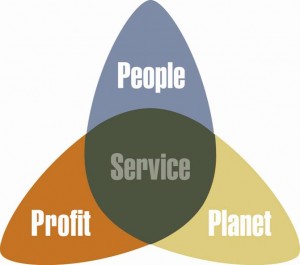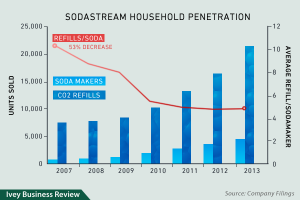http://a4.files.biography.com/image/upload/c_fill,dpr_1.0,g_face,h_300,q_80,w_300/MTE5NTU2MzE2MTY4Njg1MDY3.jpg
http://ak.picdn.net/shutterstock/videos/426379/preview/stock-footage-stock-market-tickers-sliding-on-a-curved-path-at-various-speeds.jpg
Recently Warren Buffet t lost $2.5 billion between his positions in IBM and Coca-Cola. This article discusses how
t lost $2.5 billion between his positions in IBM and Coca-Cola. This article discusses how
poor earnings on their quarterly reports led to a drop in IBM’s and Coke’s stock price by 11% and 6% respectively. Buffett is undoubtedly the most famous value investor in history who follows the teachings of Ben Graham – searching for high-quality companies that tend to rise over time because of their intrinsic value. This is a strategy that was briefly touched on in our COMM 101 class about capital markets. Having an interest in equities, this is an approach that I am familiar with and is one that I often implement when evaluating various securities. Searching for undervalued companies was a focal point of discussion that the PMF guest speakers touched on when they explained how they pick stocks for their portfolio. Although this strategy has proven to be successful for many investors, it is imperative to acknowledge that the capital markets never come without risk. Warren Buffet has made a fortune investing but even he is not immune to the forces of the market. The long term success however of the PMF program and Berkshire Hathaway is evidence of the effectiveness of investing in  companies with strong fundamentals. Keeping this in mind I think it is highly unlikely that Buffett will liquidate these positions or change his investment strategies.
companies with strong fundamentals. Keeping this in mind I think it is highly unlikely that Buffett will liquidate these positions or change his investment strategies.


 article above briefly outlines some of the questions that are asked to candidates during their interviews for employment at Goldman Sachs. The firm’s global head of recruiting, Michael Desmarais says that a common interview question would be to evaluate a company’s market valuation or to provide a stock pitch. In addition to this, the company blog indicates that it attempts to use the interview process to judge an individual’s creativity and problem-solving abilities. They do this by asking prospective employees to describe a procedure that can be used to figure out how many manhole covers there are in New York City, or similar thought provoking questions.
article above briefly outlines some of the questions that are asked to candidates during their interviews for employment at Goldman Sachs. The firm’s global head of recruiting, Michael Desmarais says that a common interview question would be to evaluate a company’s market valuation or to provide a stock pitch. In addition to this, the company blog indicates that it attempts to use the interview process to judge an individual’s creativity and problem-solving abilities. They do this by asking prospective employees to describe a procedure that can be used to figure out how many manhole covers there are in New York City, or similar thought provoking questions. qualities typically associated with entrepreneurship, but utilize them within a large company. Employing the skills of such individuals is imperative to the growth and success of any firm and I believe that more companies will begin to ask similar brain teasing questions during interviews in order to help them find ideal employees.
qualities typically associated with entrepreneurship, but utilize them within a large company. Employing the skills of such individuals is imperative to the growth and success of any firm and I believe that more companies will begin to ask similar brain teasing questions during interviews in order to help them find ideal employees.
 vides interesting insight into Sodastream, and focuses on several key talking points of recent COMM 101 lectures. Sodastream is a company that allows customers to make their own pop or carbonated beverages according to their own preferences from the comfort of their own home. Their primary value proposition is that they offer a healthier, cheaper alternative to traditional cola by offering individual customizability and a large assortment of flavor selection. Consumers can control what goes into the soda that they are drinking and this is Sodastream’s Point of Difference. They have developed a product that has less calories, carbs, sugar, sodium, and caffeine, and is also $0.22 cheaper/litre of soda compared to generic brands.
vides interesting insight into Sodastream, and focuses on several key talking points of recent COMM 101 lectures. Sodastream is a company that allows customers to make their own pop or carbonated beverages according to their own preferences from the comfort of their own home. Their primary value proposition is that they offer a healthier, cheaper alternative to traditional cola by offering individual customizability and a large assortment of flavor selection. Consumers can control what goes into the soda that they are drinking and this is Sodastream’s Point of Difference. They have developed a product that has less calories, carbs, sugar, sodium, and caffeine, and is also $0.22 cheaper/litre of soda compared to generic brands. ways to regain steadily increasing profits. The challenges that Sodastream are facing proves that the business landscape is constantly
ways to regain steadily increasing profits. The challenges that Sodastream are facing proves that the business landscape is constantly